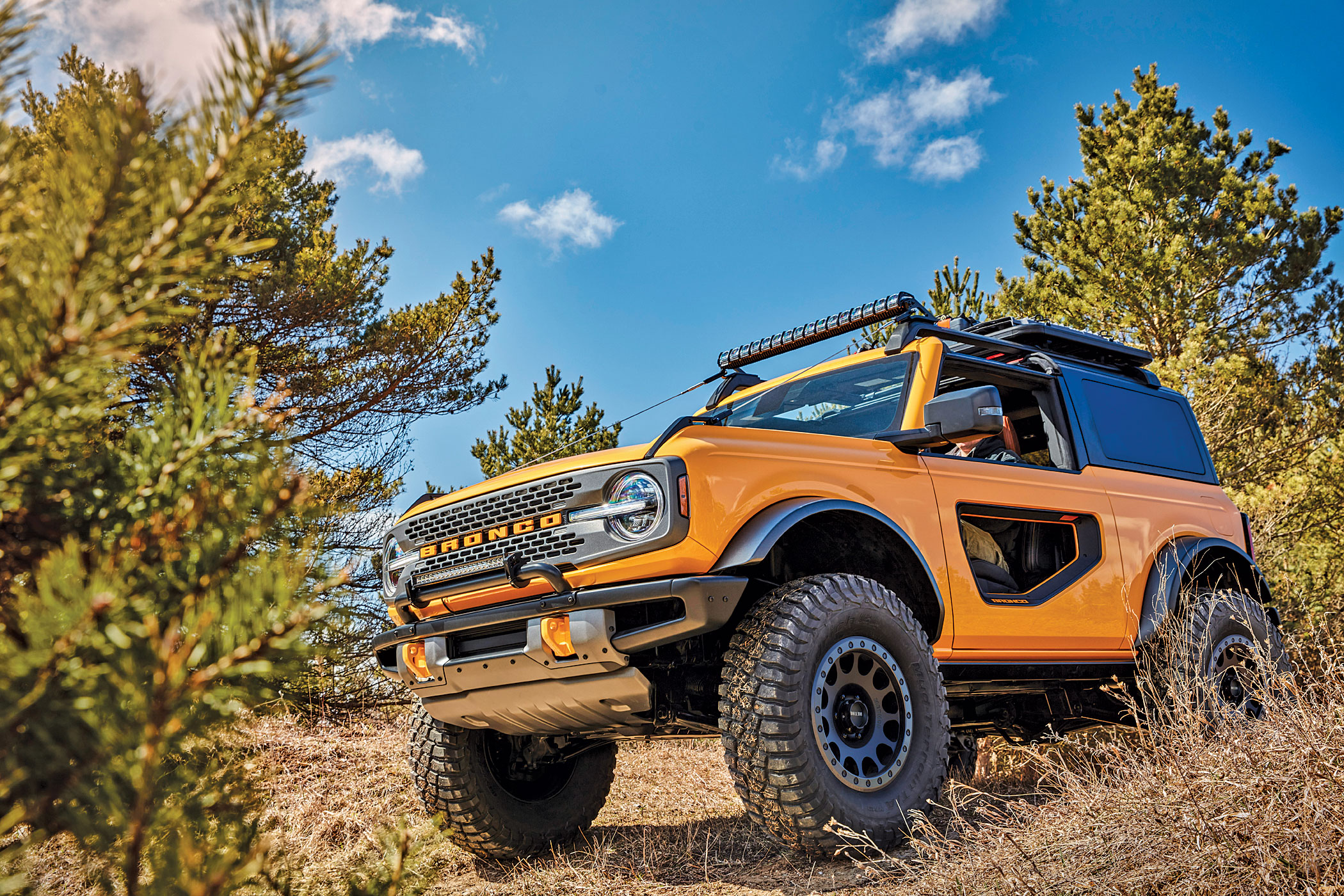
If your social media profile is anything like mine, you’ve been seeing a lot of new Ford Broncos lately.
It’s always been a slow burn in the background — typically some friend of a friend posting a back-corner Internet story built on a few Photoshopped images of what the Bronco might look like — if Ford ever decided to build it again.
The refrain was always the same: It’s coming! No, really!
Sort of like the Portuguese Barn Find story, the dream of Bronco III simmered in the background, bubbling along lockstep with a booming old-Bronco market. Then, finally, Ford started to actually develop what its fans had been asking for, and Bronco fever grew.
In July, 2020’s worst-kept secret finally crested a hill in the distance and rolled into everyone’s feed, direct from FoMoCo.
Off-road dreams turned to reality in one evening. Four-by hype went nuts. My phone buzzed with updates as I was trying to barbecue on my back deck. I imagine that at that very moment, the person who slapped “Blazer” on Chevy’s newest mall-rated crossover was tearfully sliding family photos across their desk and into a cardboard box. Dreams turned reality indeed.
Instant collectible?
Hype is one thing, but collectibility is something completely different.
Are special-edition Broncos the newest “Instant Collectibles” — 2021’s Pace Car Corvettes, or Eldorado convertibles, or Prowlers, or PT Cruisers?
That’s quite a list, and it begs another question: Can an auto builder ever successfully build cars with the intention of future collectible status? How do you, as Ford, ensure you’re building a new Bronco and not a new Bronco II?
That last question is kind of silly, because while you and I might think that way as car collectors, Ford probably doesn’t. Building cars people want to collect is good for a brand, but so is simply selling a lot of cars over a long weekend. After all, while Dodge’s current “Hemi everything” policy is great, don’t forget that it took an army of cringe-worthy Reliants and Caravans to save Chrysler in the 1980s.
Regardless, dredging up icons from the past has proven to be a good method for generating public interest these days, from the GT to the new Mustang Mach-E. We, as collectors, get to reap the rewards that the public’s focus on heritage within newness provides.
New Mustangs with retro style make people look to old Mustangs, for example. But any hope for real collectibility of these new heritage-style models, I think, relies upon their specialization within our “one size fits all” world.
In short, they have to do something really well to qualify.
Job One: one job
If you look at the high points of the American cars we call collectible today, one thing is pretty obvious: They each had an X-factor that set them apart and made them unique in some way. We have assigned value to that one big thing.
The ’64 Pontiac GTO brought muscle to the masses. The ’65 GT350 showed what ingenuity and drive could accomplish. The ’66 Bronco made a Jeep livable. You could drive all of them anywhere, sure, but they all did something well, or were key in changing the car world.
But transport back to when those cars were new, and the view’s a bit different. The transition from appliance to collectible largely only happened after these machines made impacts on their owners — and I think in most cases, it had little to do with the builders’ intent. After all, Shelby was trying to win races and make money, not build a legion of followers with paint-pen-signed dashes, right?
Jack of all trades…
If we’re looking at Ford’s current offerings on a spectrum of specialization, one side would have Shelby GT500s, the new GT, the Raptor, and probably the Bronco. They’re all usable daily, but they’re also special tools.
The other side? Flex, Edge, Explorer, Escape. Appliances well suited to a bunch of tasks.
From a pure specialization standpoint, it doesn’t take long to figure out which ones are ’65 Falcons and which ones are ’65 GT350s, if you get my meaning. Obviously there’s a lot more to it than that, but if we’re trying to derive any hope of future collectibility in current models, that’s a place to start.
As for the Bronco, early adopters won’t care about anything other than hype. They’ve already lined up with cash in hand and dreams of dirt. Ford will build rigs and those people will use them up, and if those user experiences are good ones — and not too many end up built — those of us in the collector world may see these new Broncos again in the future, cresting a rise in value after a long dip of new-car depreciation.
We all know that story because we’ve all seen it before.
What I think is notable right now, however, is what will likely happen to already-inflated classic-Bronco demand. Vintage rigs are about to ride another wave of interest that the fresh Bronco has created. Buying in now and selling soon makes some sense — at least in the short term, until the new Bronco starts to age like a 2005 Mustang GT. For all the new Bronco’s hype, for a collector, that’s really the take-away.
As for me, my feed is now full of Photoshopped Blazers. What does that tell you? ♦